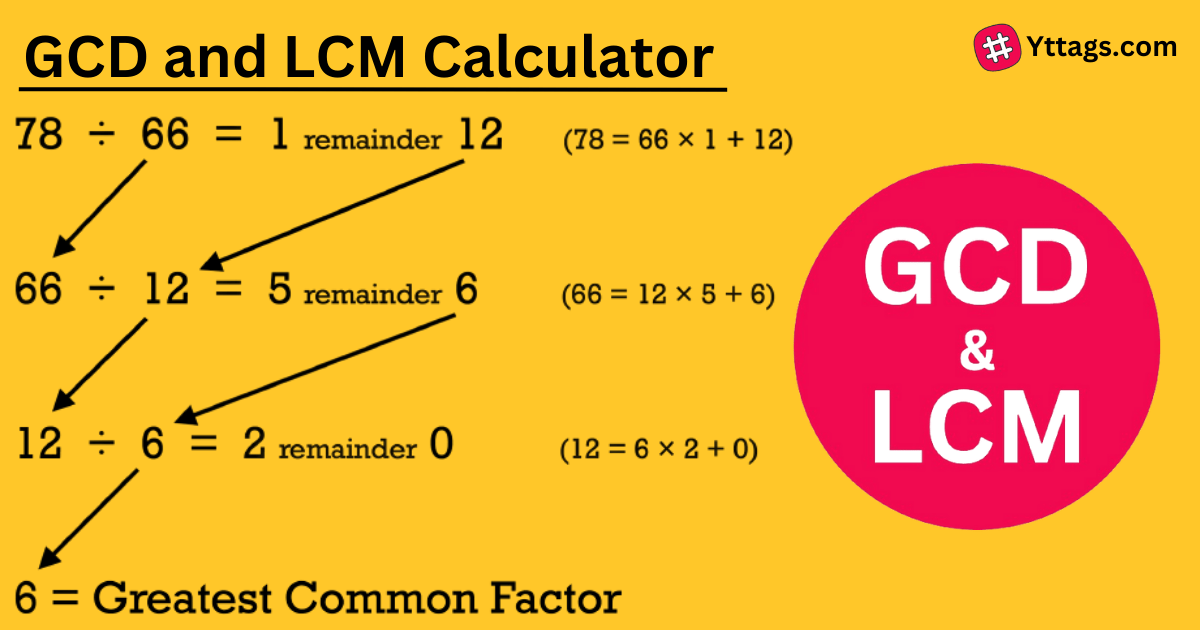GCD and LCM Calculator
Enter the numbers separated by commas in the box and click Calculate to find out the GCD and LCM of the number.
Enter the numbers separated by comma
| LCM | XXXX |
|---|---|
| GCD | XXXX |
If you use this great tool then please comment and/or like this page.
Average Rating: Tool Views: 290
Average Rating: Tool Views: 290
Subscribe for Latest Tools
How to use this GCD and LCM Calculator Tool?
How to use Yttags's GCD and LCM Calculator?
- Step 1: Select the Tool

- Step 2: Enter the numbers separated by comma And Click On Calculate Button

- Step 3: Check Your GCD and LCM Calculator Result

If you want to link to Gcd And Lcm Calculator page, please use the codes provided below!

FAQs for GCD and LCM Calculator
What is a GCD and LCM Calculator?
A GCD (Greatest Common Divisor) and LCM (Least Common Multiple) Calculator is a tool that calculates the largest common factor and smallest common multiple of two or more numbers, often used in mathematics for simplifying fractions and solving mathematical problems involving multiples.
Why do we use LCM and GCD?
Thus, the gcd of two numbers is the largest part of their prime factorization that they have in common. The lcm of two numbers is the number which has all the prime factors from both numbers and no other factors.
Where is GCD and LCM used in practical life?
For cases where you need to distribute, what if the same 10 chocolates were to be given to five kids instead of 2? We usually find use of GCD in measurements and construction fields. If we know the LCM and GCD, then we can simply find the product of numbers.
What is the use of GCD in real life?
In real life we use this concept when we try to split things into smaller sections. Trying to figure out how many people we can invite or trying to arrange something in rows or groups.
Why is GCD so important?
The GCD is used for a variety of applications in number theory, particularly in modular arithmetic and thus encryption algorithms such as RSA. It is also used for simpler applications, such as simplifying fractions.